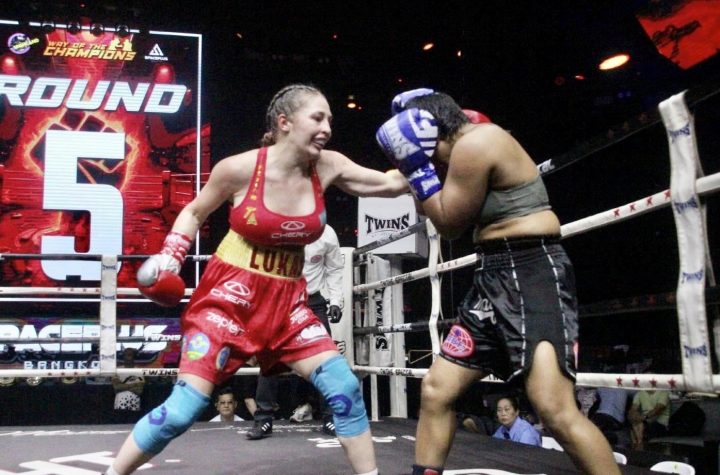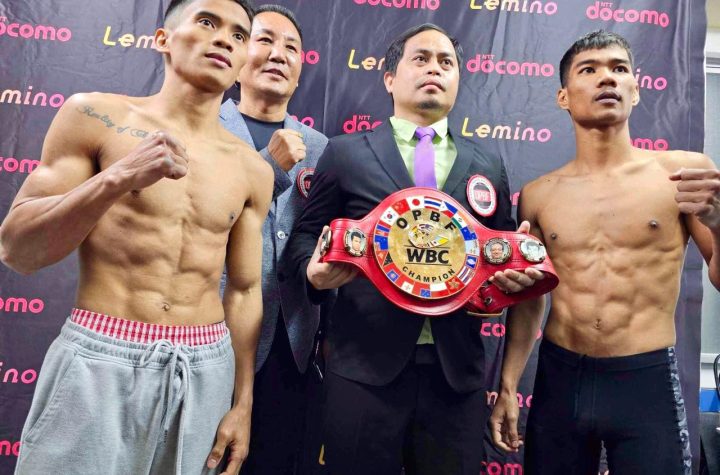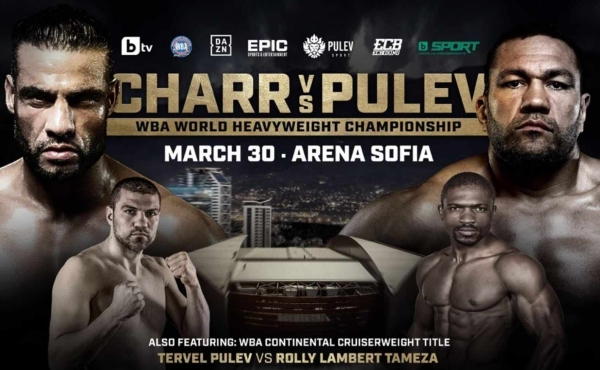
Woods sits down with “42 to 1” co-director Jeremy Schaap.
Boxing fans were jazzed to hear that with the new slate of ESPN’s “30 for 30” docs comes a sweet science entry.
“42 to 1” drops Tuesday, December 11, at 9 p.m. ET on ESPN.
The film, co-directed by Ben Houser and Jeremy Schaap, chronicles one of the most famous upsets in sports history: Buster Douglas’ shocking knockout of the then-undefeated Mike Tyson.
I was watching on February 11, 1990, and through the reefer-hazed frat house room, a romance was born; I’d been a boxing fan, but more so an all sports fan. This win opened up my eyes to the full range of effects a thrilling prize fight could inspire.
The in-ring glory, combined with the outside-the-ring back stories, featuring characters suited for novels, put me on the fight-writer path.
I reached out to ESPNer Schaap, to get some lowdown on the project.
Michael Woods: Can you tell me how you came to this project, the particulars of where and when and why?
Jeremy Schaap: I pitched this idea to Libby Geist. I think that was last fall. It’s something I’ve always wanted to do. In fact, I did stories about the fight for the 20th and 25th anniversaries. To me, it’s one of the great moments in sports history. A thrilling fight. An entirely unexpected outcome. And a protagonist that most people, even sports fans, know very little about.
Woods: I’m guessing you learned some things you thought maybe you’d already known?
Schaap: My co-director Ben Houser and I spent a lot of time focusing on Buster’s upbringing and his life before the fight. His relationship with his father Bill Douglas is a central part of the story — and his relationships with his longtime manager John Johnson and his trainer J.D. McCauley. We learned a lot about the Douglas family which I didn’t know. Buster’s brother Bill and Bruce Trampler, who worked with Dynamite, had some great stories.
Woods: What should viewer takeaways be from watching this?
Schaap: We hope that viewers who see this will come away with a greater understanding of what made it possible for Buster to win the fight — and that we will debunk some of the myths of the fight. Buster didn’t get lucky. Buster was far from a bum. Buster had real talent. What he often lacked was a true commitment to conditioning — and he wasn’t always motivated. But for this fight, when it mattered most, he was at his absolute best. He stood up to the bully and refused to be intimidated. There’s a lesson here that transcends sports. It’s about what it takes to rise to the occasion — what it took physically and emotionally when no one thought he had a chance. It was just three weeks after his mother’s death.
There were gamblers who wagered $140,000 on Mike Tyson to win $4000. That’s how little respect there was for Buster. The Mirage made hundreds of thousands of dollars on the fight.
Buster wasn’t shaking in his boots, as some other opponents had. It’s also about the people who believed in him. There weren’t many but they were convinced he would win.
Woods: What were your takeaways from making it and being knee deep in that event?
Schaap: It’s always kind of bothered me that people try to diminish Buster’s achievement. They make excuses for Tyson — even though of course no one would’ve made excuses for Buster had he lost. They also dismiss Buster as a one-hit wonder — and point to the fight against Holyfield. But that’s not what this is about. This is about an incredible upset, perhaps the most stunning ever, and that remarkable achievement. It wasn’t a lucky punch. It was a dismantling. A terrific fight. And Mike fought back, dropping Buster in the eighth. Imagine kicking Tyson around the ring for eight rounds, then getting knocked down, then getting back up (beating the count!) and then a few minutes later knocking out the invincible, the undefeated, the fearsome Mike Tyson. The fight itself was great theater. The story behind it is compelling as well.





More News
Marcial vs Sinam in Manila
Era, Lukas, Innes Win in Thailand
Vitor vs Kim in Bohol